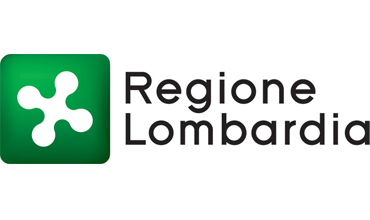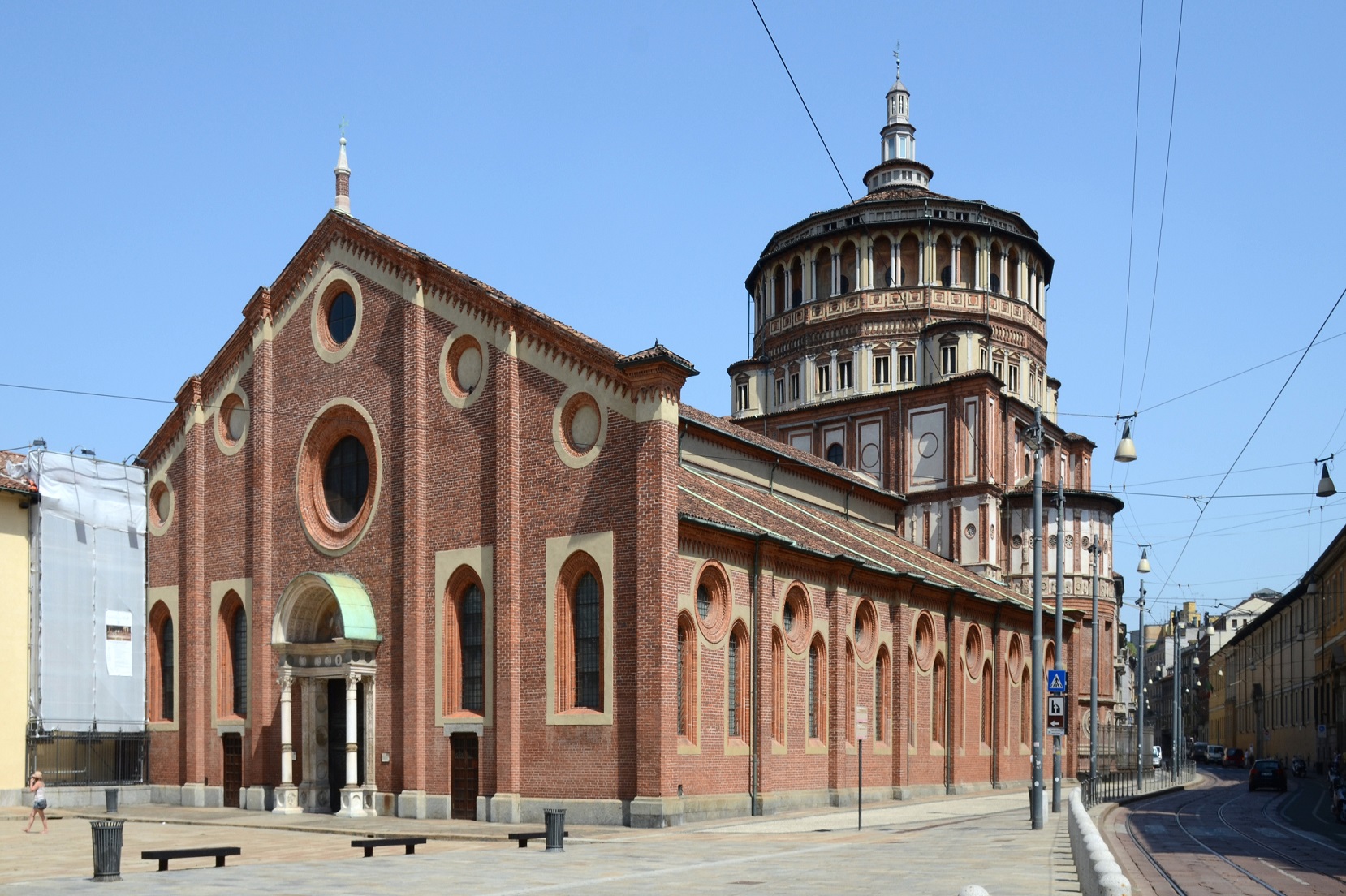In the centre of Milan, there is one of the jewels of the Italian Renaissance: the Basilica of Santa Maria delle Grazie with the adjacent Last Supper by Leonardo da Vinci.
Because of the presence of the "Last supper", the basilica of Santa Maria delle Grazie was declared a UNESCO World Heritage site.
Free admission at the Basilica every day of the week, at the opening hours indicated in the following site: https://legraziemilano.it/la-basilica/gli-orari/ (only in Italian language)
The visit to the Last Supper is strictly regulated to preserve the integrity of the painting (25 people at a time, for 15 minutes) and it is necessary to book well in advance at this link (only in Italian language). The ticket is free for people with disabilities and a family member or carer, but reservation is required.
Santa Maria delle Grazie, a jewel of the Renaissance
The tour starts from the wonderful basilica, built in 1463 and largely modified in less than thirty years, until it became the jewel of the Renaissance that we can see today. The chapel dedicated to the Vergine del Rosario, still existing on the left side of the church, probably constituted the first nucleus of the complex that was commissioned by Vimercati to host an image of the Virgin considered to be miraculous. The convent, originally named after San Domenico, was later dedicated to Santa Maria delle Grazie as a tribute to the symbolic meaning of this chapel.
Guininforte Solari, the most qualified and famous architect of that time in Milan, was instructed to carry out the work. The result was a church with a longitudinal plan and side chapels, typical of the fifteenth-century tradition: a structure intended to be shortly modified and overcome. Ludovico il Moro commissioned a vast work of renewal of the church in Renaissance style. One of the first innovations was the construction of the portal, for which Ludovico il Moro brought marble from the Fabbrica del Duomo. Then followed the construction of the Tribune and the partial destruction of the Church made by Solari.
Donato Bramante, a famous architect of the time, was asked to build the new tribune. Bramante conceived an innovative architecture that made the church a great unitary organism: he eliminated the division into naves and chapels and designed a cubic space, surmounted by a dome.
After the construction of the building, the most important Milanese families requested to use the chapels as a burial for the members of their families and entrusted the decoration to important artists of the time: the Cappella di Santa Caterina holds sculptures by Antonello da Messina, the Cappella della Vergine Adorante and the Cappella di Santa Corona have frescoes by Gaudenzio Ferrari.
Inside the church there is an information panel with a short text in Italian, English and in Braille characters. In the central part of the panel, there is a plan drawn in relief that helps to get oriented inside the building. In addition, by framing the QR Code or NFC with a smartphone, it is possible to access content available in various modes suitable for people with sensory disabilities. For information on accessibility, please click on this link
"The Last Supper"
In the churchyard, on the left side of the basilica, there is the entrance of the Museum of the Last Supper by Leonardo da Vinci
Here it is possible to admire Leonardo's masterpiece which, as the UNESCO motivation states, "Has opened a new era in the history of art".
On a wall of the rectangular room that used to be the refectory of the Convent, between 1494 and 1497, Ludovico il Moro asked Leonardo da Vinci to paint the "Last Supper". In the painting, the apostles had to seem seated right next to the friars of the convent and the scene was made even more realistic by the precision with which the dishes and utensils on the table were painted in detail. But above all, even today the use of light and perspective is striking, and they want to represent a precise moment of the story of the Last Supper: the opening of three windows, beyond which we can see a bright landscape in backlight, illuminates the Apostles from behind and from the sides.
Although this is a painting on a wall, the Last Supper is not a true fresco. Leonardo, in fact, had an idea of perfection that could not agree with the timings required by a fresco. He therefore chose to paint in mixed tempera on plaster, because this innovative technique would have allowed him a slow and meticulous development of his painting and therefore an extreme attention to detail, while the fresco would have required a quick colour lay, when plaster was still wet. Furthermore, the fresco would not have allowed the many changes that resulted from the restoration: today we know that Leonardo has modified the work also depending on the light that was entering the refectory room, to be able to capture the exact moment of the day when he wanted the painting to be set.
Unfortunately, the result of this technique is very delicate and the painting began to deteriorate over time. That is why, the Last Supper has been subject to numerous restorations over the centuries, the last of which ended in 1999, after twenty years of work. This latter intervention failed to bring to light what's left of the original drafts. Following this last restoration, a sophisticated air purification system has been added to the room where the Last supper is, thus allowing visitors to approach the work without damaging it. However, only 25 visitors at a time are admitted for a maximum of 15 minutes.
In the same room, on the opposite wall of Leonardo's masterpiece, there is the "Crocifissione” painted in 1495 by Giovanni Donato da Montorfano, a Lombard painter. So, in the same place, it is possible to admire the starting and ending episode of the passion of Christ. Inside the Refectory, which has 6 benches, there is a tactile 3D bas-relief that allows blind people to enjoy the masterpiece. For information on accessibility, please click on this link
"Project carried out under the General program of intervention of the Lombardy Region, funded by the Ministry of Economic Development - 2015 Allocation".

